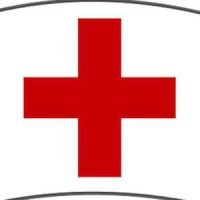Patient safety is key to providing quality healthcare. Now a new study shows that hospital nurse managers' (NMs) transformational leadership style can help create an environment conducive to patient safety. The finding is published in the Journal of Nursing Administration.
Transformational leaders are proactive and convince followers to strive for higher performance. These leaders are respected, motivate others, stimulate creativity, and recognise need for individual achievement. Earlier studies have reported that positive leadership attributes (eg, transformational style, manager support, staff involvement with decision making, positive work environment) were associated with improved safety climate, increased patient satisfaction, and reduced adverse events.
The new study, conducted by Katreena Collette Merrill, PhD, RN, assistant professor at Brigham Young University (Provo, Utah), aimed to examine to what extent NMs' leadership style promotes patient safety climate. The author conducted a survey of 1,579 nurses working in 41 nursing departments across nine hospitals. The online survey used two validated instruments: the Hospital Unit Safety Climate (HUSC) survey and Multifactorial Leadership Questionnaire (MLQ-5XS) plus demographics.
The HUSC measures these key safety dimensions: manager support, socialisation/training, safety emphasis, blameless system, use of safety data, pharmacist support, and worker safety. The MLQ-5XS is a 45-item instrument measuring transformational, transactional (corrective action approach) and laissez-faire (passive) leadership styles. Survey responses were received from 466 staff nurses (29.5 percent response rate).
"While NMs have accountability for nursing care at the department level, it has previously been unclear how they impact patient safety," Dr. Merrill writes in the journal report. "In this study, NM leadership style was associated with socialisation and training, a blameless system, and pharmacist support."
Socialisation is a process where new nurses learn not only knowledge and skills to perform their role but also the cultural norms of the department. In this study, the combination of NM laissez-faire leadership and ICU setting contributed to an environment where nurses reported being socialised into a negative safety climate.
A blameless system exists when errors are viewed by team members as learning opportunities rather than incompetence. In this study, nurses who reported their manager as having laissez-faire leadership also reported a system of blame when errors occurred. This was manifested in both ICU and non-ICU departments.
In addition, nurses who reported their managers were transformational also perceived that the pharmacy was helpful in medication delivery. This is consistent with previous studies showing that including a pharmacist on care teams decreased medication errors.
Results of the study suggest that nursing leaders must concentrate on developing transformational leadership skills while also diminishing negative leadership styles.
"NMs must understand that transformational leaders may exhibit some laissez-faire tendencies, especially when experiencing an increased workload," the author says. "Work volume and responsibilities outside the unit may create absences that are interpreted by staff as laissez-faire leadership."
Image credit: Flickr.com
Transformational leaders are proactive and convince followers to strive for higher performance. These leaders are respected, motivate others, stimulate creativity, and recognise need for individual achievement. Earlier studies have reported that positive leadership attributes (eg, transformational style, manager support, staff involvement with decision making, positive work environment) were associated with improved safety climate, increased patient satisfaction, and reduced adverse events.
The new study, conducted by Katreena Collette Merrill, PhD, RN, assistant professor at Brigham Young University (Provo, Utah), aimed to examine to what extent NMs' leadership style promotes patient safety climate. The author conducted a survey of 1,579 nurses working in 41 nursing departments across nine hospitals. The online survey used two validated instruments: the Hospital Unit Safety Climate (HUSC) survey and Multifactorial Leadership Questionnaire (MLQ-5XS) plus demographics.
The HUSC measures these key safety dimensions: manager support, socialisation/training, safety emphasis, blameless system, use of safety data, pharmacist support, and worker safety. The MLQ-5XS is a 45-item instrument measuring transformational, transactional (corrective action approach) and laissez-faire (passive) leadership styles. Survey responses were received from 466 staff nurses (29.5 percent response rate).
"While NMs have accountability for nursing care at the department level, it has previously been unclear how they impact patient safety," Dr. Merrill writes in the journal report. "In this study, NM leadership style was associated with socialisation and training, a blameless system, and pharmacist support."
Socialisation is a process where new nurses learn not only knowledge and skills to perform their role but also the cultural norms of the department. In this study, the combination of NM laissez-faire leadership and ICU setting contributed to an environment where nurses reported being socialised into a negative safety climate.
A blameless system exists when errors are viewed by team members as learning opportunities rather than incompetence. In this study, nurses who reported their manager as having laissez-faire leadership also reported a system of blame when errors occurred. This was manifested in both ICU and non-ICU departments.
In addition, nurses who reported their managers were transformational also perceived that the pharmacy was helpful in medication delivery. This is consistent with previous studies showing that including a pharmacist on care teams decreased medication errors.
Results of the study suggest that nursing leaders must concentrate on developing transformational leadership skills while also diminishing negative leadership styles.
"NMs must understand that transformational leaders may exhibit some laissez-faire tendencies, especially when experiencing an increased workload," the author says. "Work volume and responsibilities outside the unit may create absences that are interpreted by staff as laissez-faire leadership."
Image credit: Flickr.com
References:
Merrill KC (2015) Leadership Style and Patient Safety: Implications for Nurse Managers. Journal of Nursing Administration, June 2015 doi: 10.1097/NNA.0000000000000207
Latest Articles
healthmanagement, patient safety, patient satisfaction, nursing leaders, leadership style, training
Patient safety is key to providing quality healthcare. Now a new study shows that hospital nurse managers' (NMs) transformational leadership style can help create an environment conducive to patient safety.



























